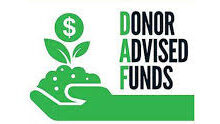They are the best of funds. They are the worst of funds. But either way, they are here to stay.
Donor-advised funds are embraced by donors and often maligned by the non-profit industry for hoarding money intended for charitable purposes. Love them or hate them, they are a big player in the world of philanthropy. Over $130 billion earmarked for charitable giving is currently held in donor-advised funds.
Recently, Jack Doyle presented a webinar for The Nonprofit Alliance on how to help your donors mobilize the money in their donor-advised funds to affect change. He had some practical and novel ideas, especially for year-end appeals.
- First and foremost, utilize digital channels to the greatest extent possible. Nearly all DAF grants are initiated online, so make it easy for your donors to act quickly. Have a DAF widget on your site and drive donors there – especially on Giving Tuesday. (We love MarketSmart’s dafwidget—it is the most comprehensive and very easy for donors to use.)
- Know and acknowledge the source of your donors’ gifts. When a donor regularly gives from a DAF, acknowledge that in your appeals and on the reply device. Create a special DAF version of your appeal for this segment and leave out the tax-deduction language that may be in your other versions.
- Know the tax laws. Make sure that you acknowledge a DAF gift appropriately. Mention the name of the fund; don’t mention tax-deductibility.
- Don’t be afraid to ask for larger amounts. The most popular first gift amounts from a DAF are $100, $200, $300, $500 and $1,000. Most funds have minimum grant amounts. But many donors with DAFs have the capacity to give more—and the funds are in their account. So, don’t be afraid to ask for bigger gifts from these donors.
And one bonus tip for next year:
Ask for two gifts at once. Twenty percent of DAF grants are scheduled in advance. In your mid-year appeal, suggest your DAF donors make an immediate gift AND schedule their year-end gift to take one thing off their holiday to-do list.
-By Meg Roberts




0 Comments